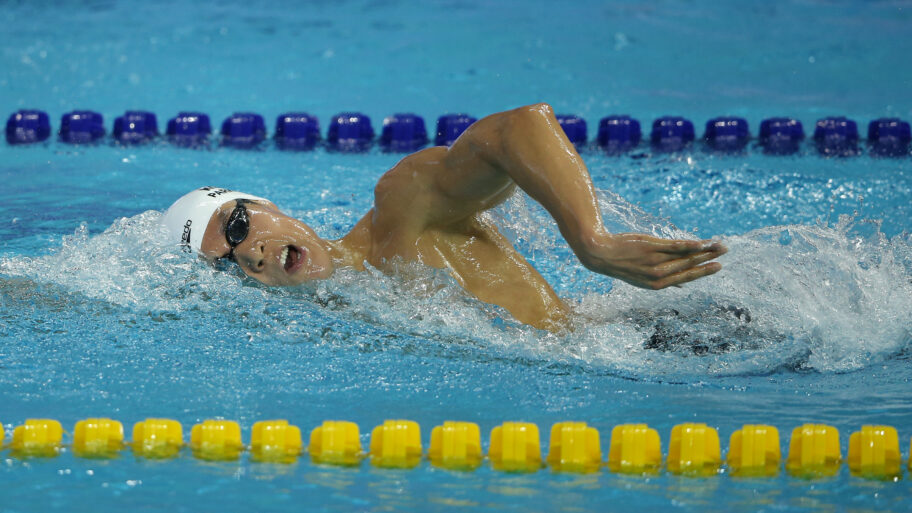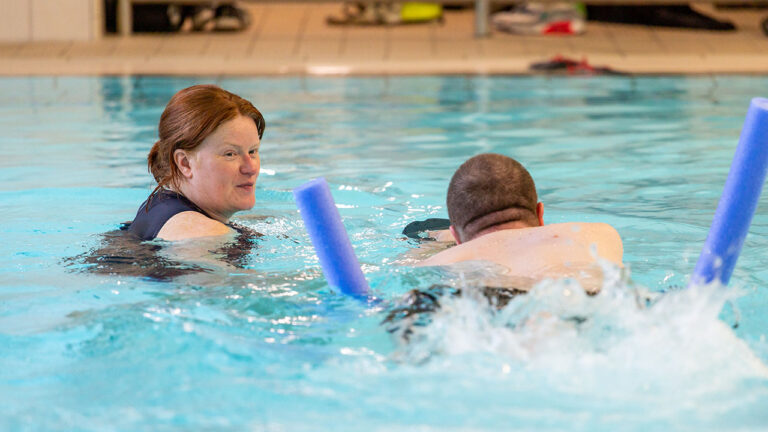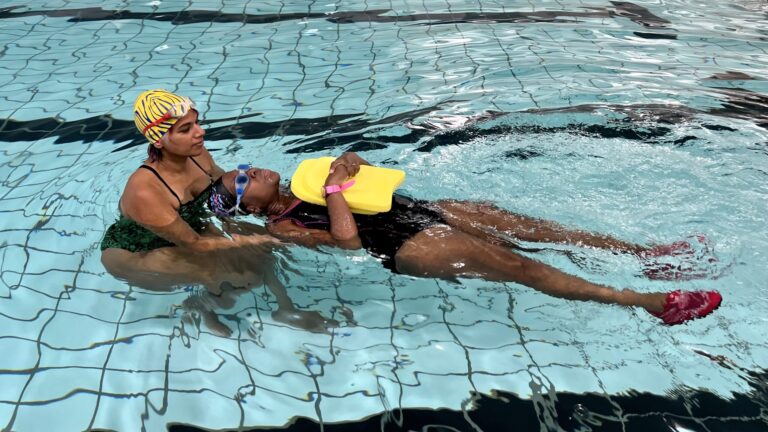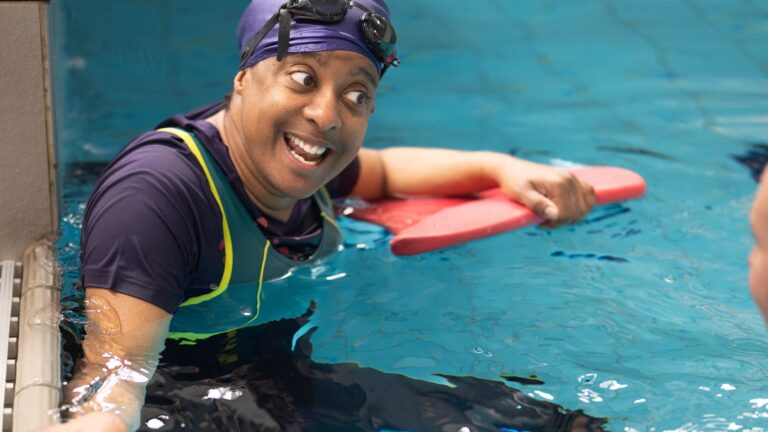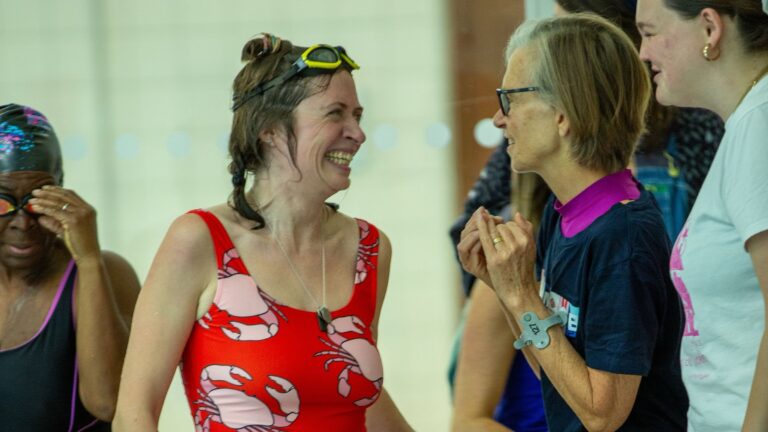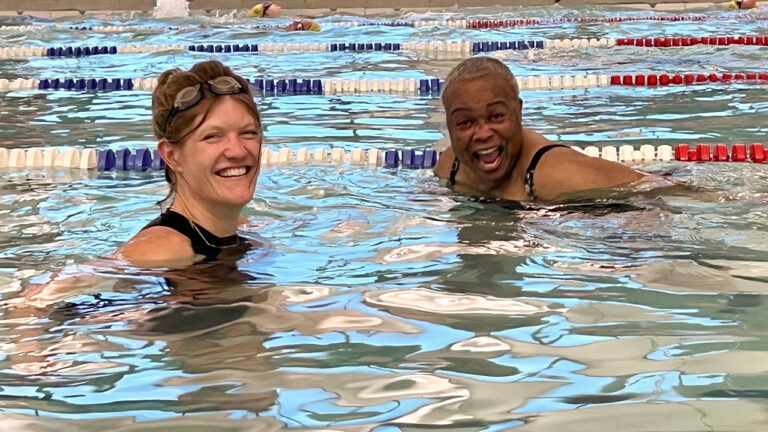Whether you are learning front crawl or are an experienced swimmer, repeating swim drills helps to improve your breathing, glide, propulsion and coordination to achieve a better technique. You can ask a volunteer to watch you and give you feedback. Over time, as you repeat those, you’ll remember them and do them automatically with more and more autonomy and freedom.
Exercise 1: Clenched-Fist Crawl
Clenching your fists makes the pulling harder, which your body then compensates by engaging your forearm. Once you get back to back to swimming with open hands, you will have better feelings in the water and this will improve your propulsion.
Exercise 2: Surface Crawl
Do a classic crawl movement, but when your arm is above the water, have the tip of your fingers brush the surface of the water in a straight line. It’s a very enjoyable drill because of the feeling of your fingers gliding over the water, but also as your arm is relaxed whilst your elbow is bent high above your head. This move is also good to improve the alignment of your body, as your arms are less on the side. If your muscles are stiff or lack flexibility as a result of your disability, this is a great exercise to loosen them up.
Exercise 3: Catch-up Crawl
This video shows the exercise and its benefits.
The difficulty lies in the timing and synchronising of your arms with your breathing. It’s good for your arm technique, but also for your balance and coordination, as well as your legs and core strength. If this is too difficult, do not worry, it may take time to learn new techniques. In the meantime, you may want to work on some breathing at home and breathing exercises in the pool.
Exercise 4: Single-Arm Crawl
On the same principle as the catch-up crawl but with a single arm, this drill lets you concentrate on the technique by focusing on one arm. Try swimming one length using the right arm only, with your left arm extended forward. If you find this exercise too difficult, you can use a kickboard. If you find it difficult to hold it or to go straight, our volunteer can guide you by supporting the kickboard and supporting you. Once you are comfortable with this, which may be after a few weeks, you could try and swim the unused arm by the side of your leg to focus on shoulder rotation. It’s easier if you have fins though.
Exercise 5: Straight-Arm Crawl
The name says it all: do front crawl with your arms straight both in and out of the water. This drill enables you to gain amplitude as you must work harder to efficiently roll your shoulders.
Exercise 6: Underwater Propulsion
More advanced swimmers can also work on improving the move of their arm underwater, so as to generate the best propulsion and glide possible. Watch this short video to understand how it works.
Next time you go to a pool, try and practice those drills along with your usual training programme.
